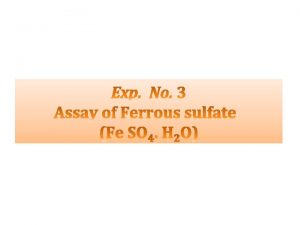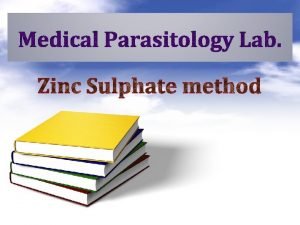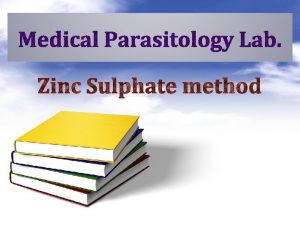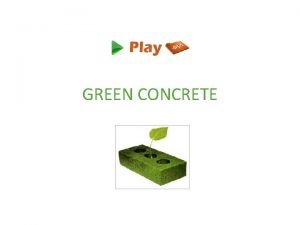SULPHATE ATTACK ON CONCRETE The sulphate attack is




- Slides: 4

SULPHATE ATTACK ON CONCRETE Ø The sulphate attack is characterized by the increase in the volume of cement paste in concrete or mortar. Ø This is due to chemical reaction between products of hydration and sulphates Ø The concrete attacked by sulphates has a characteristic whitish appearance. Ø The damage usually starts at the edges and corners followed by cracking and spalling of concrete. Ø The sulphate attack leads to the formation of Calcium Sulphate (Gypsum) and Calcium Sulphoaluminate (Ettringite) Ø Both the products occupy a greater volume than the compounds, which they replace resulting in the expansion and disruption of the hardened concrete. Ø It can be recalled that Gypsum is added to cement clinker, where it reacts quickly with C 3 A to produce ettringite which is harmless at this stage as the cement is still in the semi plastic state so that any expansion can be accommodated 1

Ø It can be recalled that Gypsum is added to cement clinker, where it reacts quickly with C 3 A to produce ettringite which is harmless at this stage as the cement is still in the semi plastic state so that any expansion can be accommodated Ø A similar reaction takes place when hardened concrete is exposed to solutions from external sources. Ø A typical source for sulphate solution is the ground water of some clays which contains sodium, calcium & magnesium sulphates. Ø The sulphates reacts with both Ca(OH)2 and hydrated C 3 A to form Gypsum & ettringite respectively. Ø The extent of sulphate attack depends upon its Permeability of concrete Ø A concentration of 1000 ppm is considered to be moderately severe and 2000 ppm as very serious concentration & 2

3

Methods of Controlling Sulphate Attack a) Use of Sulphate Resisting Cement: - Use cement with low C 3 A content. b) Quality Concrete: - A well designed, placed and compacted concrete with a low w/c ratio which is dense and impermeable has a higher resistance to sulphate attack. c) Use of Air Entrainment: - Use of air entrainment of about 6% has a beneficial effect on the sulphate resisting qualities of concrete, possibly due to v Reduction of Segregation v Improvement in Workability v Reduction in Bleeding v Better Impermeability of Concrete d) Use of Pozzolana: - Addition of Pozzolanic material converts the leachable Ca(OH)2 into insoluble non-leachable cementitious product making the concrete impermeable and thus reducing the sulphate attack. 4







